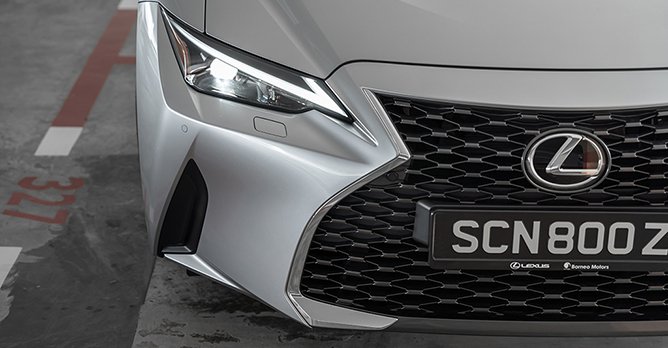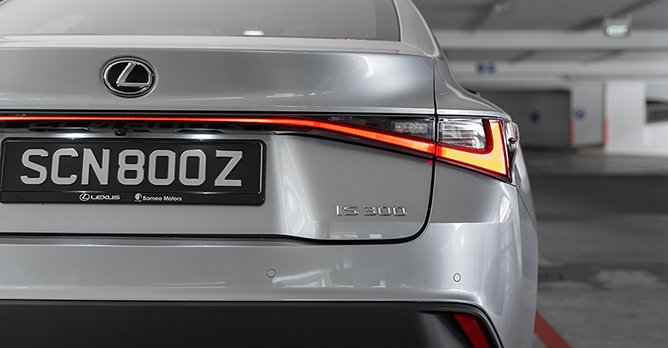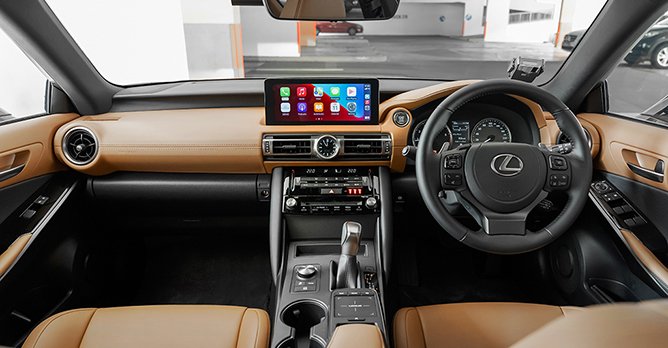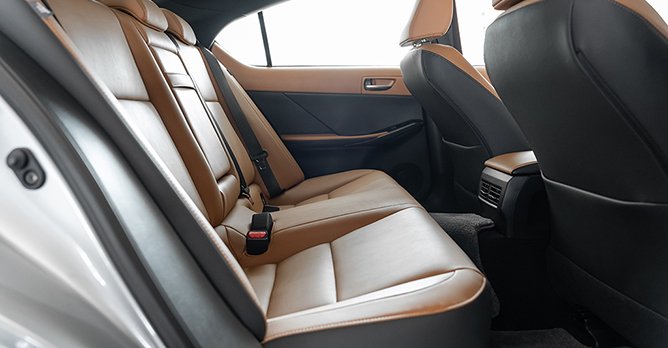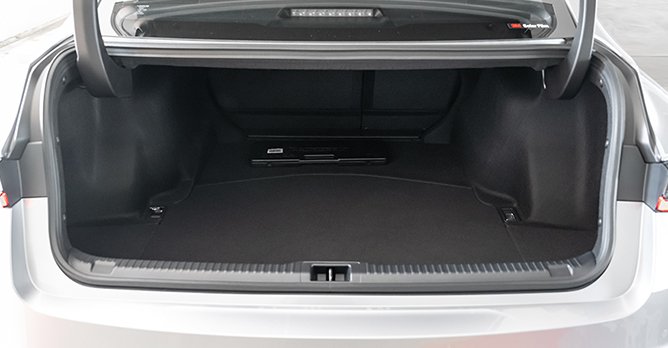Lexus IS 300 2.0 (A) Facelift Review
15 Dec 2020|25,759 views
Facelift (What's New)
Entire design of the car's exterior has changed
Tweaked suspension for better handling
Infotainment system now runs Apple CarPlay and Android Auto functions
Infotainment system is now positioned closer to the driver
Lexus has always been known to be a smooth operator on the roads, and the IS is no exception. With regards to this car, it has always been the sort, barring the fire-breathing IS F, that will set your pulse in relax rather than race mode - a perfect imperfection to many, if you may.
It's not the sort of car that will give you pure excitement, but it'll nevertheless do everything else exceptionally well.
Looks of a new era
On the design front, the luxury carmaker has certainly succeeded in getting pulses racing - at least in this pint-sized writer's eyes. The IS now looks smarter, with its skin pulled back, headlamps restyled and mesh spindle grille heavily revised.
Even things at the back have been redesigned to help keep the IS on par with the competition. The curved taillights now span the width of the body - a trait many cars may now sport, but in the case of the IS, it's the first in its class.
Sitting at 4,705mm x 1,840mm x 1,435mm (L x W x H) the updated Lexus also sits lower and wider than its predecessor, further enhancing its already menacing looks. Thus, it's hardly conservative this car, even in its non F Sport form.
So while many will lament how the IS is merely another update (it was updated once in 2016), it is nevertheless an update that's necessary to keep it slender and muscular in a segment that's highly competitive.
Feet of a ballet dancer
More than just looks, our Lexus IS300 test car was a nimble performer on the road. Yes, the eight-speed autobox and the 2.0-litre four-pot engine remain unchanged, which means the car still sends 241bhp and 350Nm of twisting force to the rear wheels and it still takes seven seconds flat to complete the century sprint. But it isn't so much about speed and power that make the IS shine.
Instead, it's the way the car handles that allows it to punch through its competitors. Whether you're on empty straights, long sweeping arcs or carving tight corners, the IS accomplishes the job with minimal fuss and maximum agility.
The chassis feels tauter, suspension stiffer and the steering wheel more talkative than before, but it's never to the point of being uncomfortable and bumpy when you're in the mood for a relaxing drive.
The IS is still a Lexus after all, which means you can still expect one of the best rides in its class. It'll soak up even the harshest road surfaces without coming across as crashy or sending any tremors to the cabin while keeping external noises well at bay at highway speeds.
Old but gold
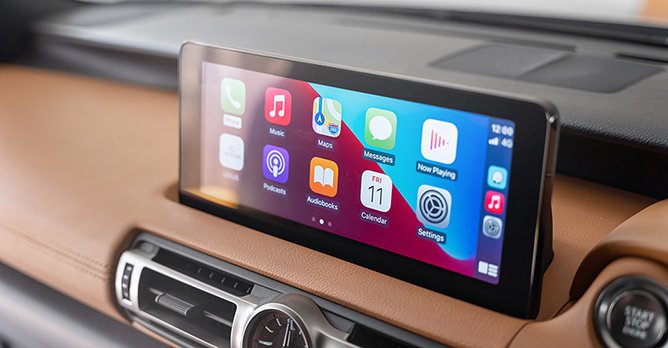
The infotainment system is now touchscreen enabled, with Apple CarPlay and Android Auto functions, and it is now a tad closer to the edge of the dashboard, which makes it easier for the driver to meddle with it. Built quality remains to be the best in the business, with uniform panel gaps, excellent fit and finish and soft touch materials beautifying the cabin.
However, minimal changes also mean that boot space remains at 480 litres, which is on par with the BMW 3 Series but more than the Audi A4 Sedan and the Mercedes-Benz C-Class. More relevantly, it also means the IS is best left for two passengers at the back as well.
A perfect work of imperfection
The Lexus IS has come a long way over the past two decades, with marked improvements that will give some of its competitors a run for their money. It's almost a car in its own class, even if it goes against strong peers like the aforementioned ones.
I reckon it has a lot to do with the Lexus culture and how it is able to properly understand its target audience before creating a car like the IS, thus, making the car you see here quite remarkable, but yet not the best in its class. And it's almost like the Japanese don't even bother about being the best in its class because that's not the main reason why they're here. Instead, they live to attain the perfection of catering to each and every one of their buyers, whether it's an IS, a UX or an LC.
In the case of the IS, Lexus has revised the chassis to make it well-balanced, tuned the suspension accordingly to fit on-road driving behaviour, and ensured that the steering feels natural - quite simply because the carmaker knows that most of its IS buyers won't be mad-handling the car around a race track every weekend.
So yes, it's not the sort of car that will give you pure excitement, but it'll nevertheless do everything else exceptionally well. If that's not good enough, I don't know what is.
Want to catch more of the Lexus IS' new redesigned exterior? Why not watch our video review as well?
Facelift (What's New)
Entire design of the car's exterior has changed
Tweaked suspension for better handling
Infotainment system now runs Apple CarPlay and Android Auto functions
Infotainment system is now positioned closer to the driver
Lexus has always been known to be a smooth operator on the roads, and the IS is no exception. With regards to this car, it has always been the sort, barring the fire-breathing IS F, that will set your pulse in relax rather than race mode - a perfect imperfection to many, if you may.
It's not the sort of car that will give you pure excitement, but it'll nevertheless do everything else exceptionally well.
Looks of a new era
On the design front, the luxury carmaker has certainly succeeded in getting pulses racing - at least in this pint-sized writer's eyes. The IS now looks smarter, with its skin pulled back, headlamps restyled and mesh spindle grille heavily revised.
Even things at the back have been redesigned to help keep the IS on par with the competition. The curved taillights now span the width of the body - a trait many cars may now sport, but in the case of the IS, it's the first in its class.
Sitting at 4,705mm x 1,840mm x 1,435mm (L x W x H) the updated Lexus also sits lower and wider than its predecessor, further enhancing its already menacing looks. Thus, it's hardly conservative this car, even in its non F Sport form.
So while many will lament how the IS is merely another update (it was updated once in 2016), it is nevertheless an update that's necessary to keep it slender and muscular in a segment that's highly competitive.
Feet of a ballet dancer
More than just looks, our Lexus IS300 test car was a nimble performer on the road. Yes, the eight-speed autobox and the 2.0-litre four-pot engine remain unchanged, which means the car still sends 241bhp and 350Nm of twisting force to the rear wheels and it still takes seven seconds flat to complete the century sprint. But it isn't so much about speed and power that make the IS shine.
Instead, it's the way the car handles that allows it to punch through its competitors. Whether you're on empty straights, long sweeping arcs or carving tight corners, the IS accomplishes the job with minimal fuss and maximum agility.
The chassis feels tauter, suspension stiffer and the steering wheel more talkative than before, but it's never to the point of being uncomfortable and bumpy when you're in the mood for a relaxing drive.
The IS is still a Lexus after all, which means you can still expect one of the best rides in its class. It'll soak up even the harshest road surfaces without coming across as crashy or sending any tremors to the cabin while keeping external noises well at bay at highway speeds.
Old but gold

The infotainment system is now touchscreen enabled, with Apple CarPlay and Android Auto functions, and it is now a tad closer to the edge of the dashboard, which makes it easier for the driver to meddle with it. Built quality remains to be the best in the business, with uniform panel gaps, excellent fit and finish and soft touch materials beautifying the cabin.
However, minimal changes also mean that boot space remains at 480 litres, which is on par with the BMW 3 Series but more than the Audi A4 Sedan and the Mercedes-Benz C-Class. More relevantly, it also means the IS is best left for two passengers at the back as well.
A perfect work of imperfection
The Lexus IS has come a long way over the past two decades, with marked improvements that will give some of its competitors a run for their money. It's almost a car in its own class, even if it goes against strong peers like the aforementioned ones.
I reckon it has a lot to do with the Lexus culture and how it is able to properly understand its target audience before creating a car like the IS, thus, making the car you see here quite remarkable, but yet not the best in its class. And it's almost like the Japanese don't even bother about being the best in its class because that's not the main reason why they're here. Instead, they live to attain the perfection of catering to each and every one of their buyers, whether it's an IS, a UX or an LC.
In the case of the IS, Lexus has revised the chassis to make it well-balanced, tuned the suspension accordingly to fit on-road driving behaviour, and ensured that the steering feels natural - quite simply because the carmaker knows that most of its IS buyers won't be mad-handling the car around a race track every weekend.
So yes, it's not the sort of car that will give you pure excitement, but it'll nevertheless do everything else exceptionally well. If that's not good enough, I don't know what is.
Want to catch more of the Lexus IS' new redesigned exterior? Why not watch our video review as well?
Also read our comparison article on:
Jaguar XE vs Lexus IS vs Mercedes-Benz C-ClassCar Information
Lexus IS 300 2.0 (A)
CAT B|Petrol|11.9km/L
Horsepower
180kW (241 bhp)
Torque
350 Nm
Acceleration
7sec (0-100km /hr)
This model is no longer being sold by local distributor
All Used Lexus IS 300Thank You For Your Subscription.











































